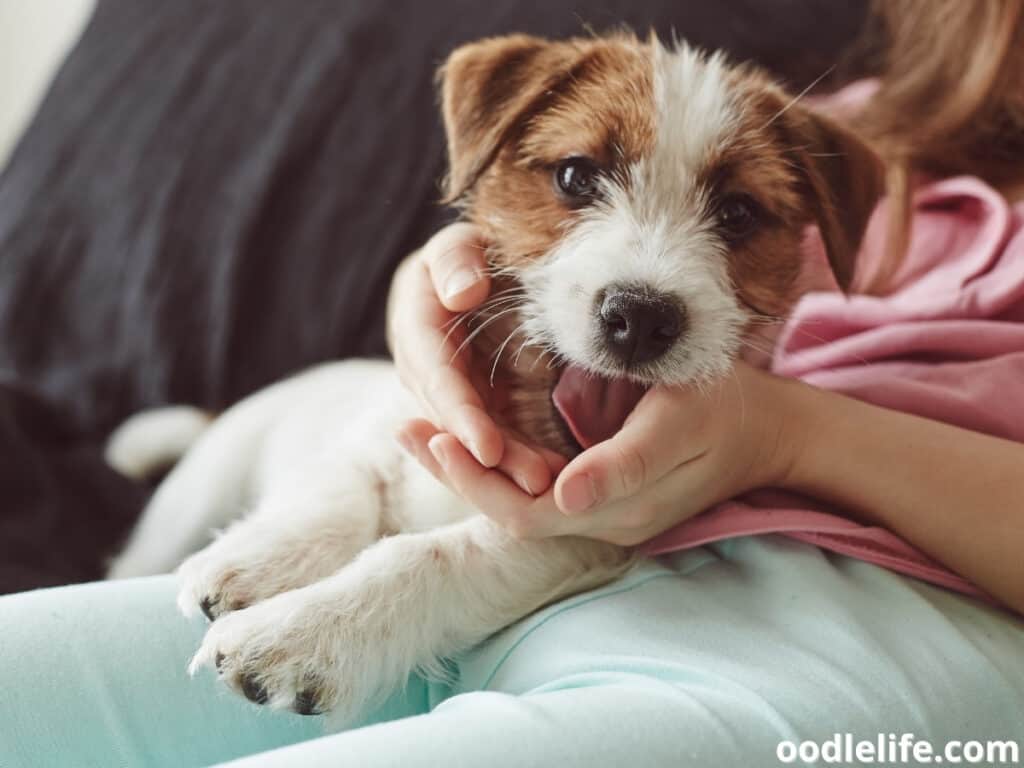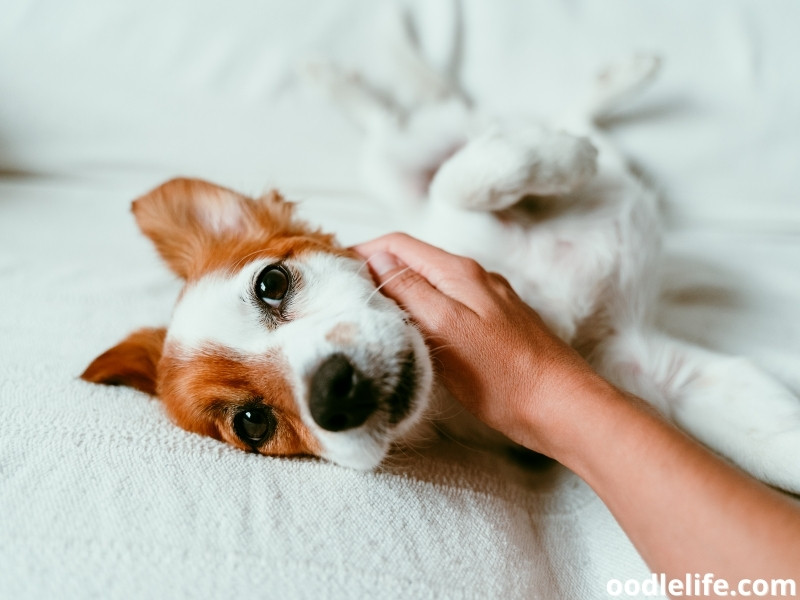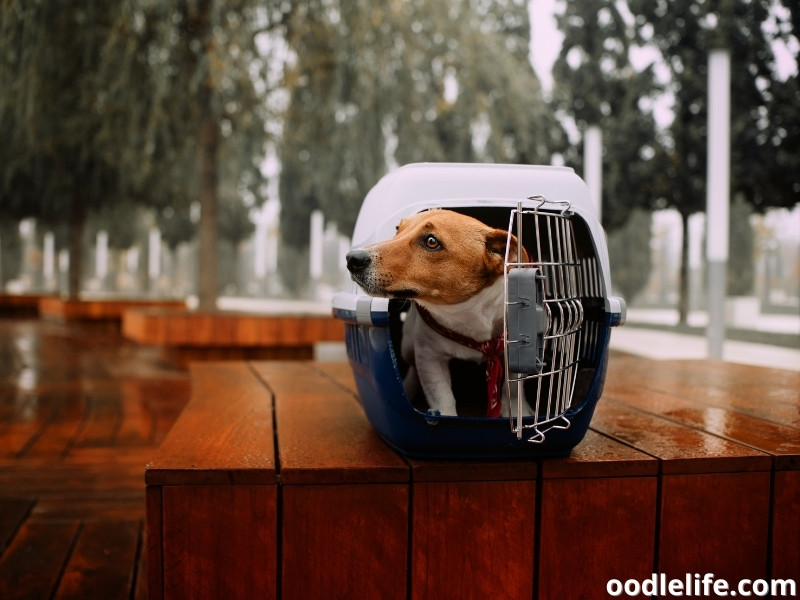Why Does My Jack Russell Follow Me Everywhere?
If you’re a pet owner, you might fancy the idea that you always have a friend to spend time with. Jack Russell owners have a loyal friend who is always there to provide them with the company they need. Sure, your pet might not express themselves using words, but they do communicate using their eyes, paws, tail, and every part of their body.
A Jack Russell is a true friend, and you can always depend on them to be around you, even when you’re somewhere enjoying some quiet alone time. If a Jack Russell spends more time around you, it might get to a point where you ask yourself, “why does my Jack Russell follow me everywhere?”

Your pet following you everywhere might not be a bad thing. However, it’s important to know why this is happening and how best you can deal with it. The last thing you need is to misinterpret the signs your dog is giving you.
There are many reasons why your Jack Russell is always following you. Certain dog breeds have this tendency. Your dog might be clingy because of separation anxiety, positive reinforcement, enthusiasm, or the sheer fact that he likes the attention you give him.
Whatever the reason your Jack Russell follows you everywhere, it’s worth noting that this can be problematic for you and the dog. The good news is that there is a way of dealing with this issue to ensure you have a healthy relationship with your dog.
This article will help you understand why your Jack Russell follows you everywhere and what you can do to stop this.
Why a Jack Russell Loves Being Around You?
Jack Russells are considered clingy by nature. They love being around their owners. It’s not uncommon to find Jack Russells following their owners or staring at them.
This is especially true if you’re the alpha in your home.
There is no one specific reason why your dog follows you everywhere. The reason varies from one dog to another. However, the following are common reasons why your Jack Russell will follow you everywhere:
Your Jack Russell Is a Velcro Dog
Having a pet to add to your family is indeed a rewarding feeling. But it becomes an issue when you discover that your furry friend is following you from one corner to another. He never leaves you out of sight.

Sure, it’s a sweet thing at first, but it gets frustrating, especially if you constantly find yourself tripping over when making trips around your home.
If you’re dealing with this, there is a good chance your dog is a velcro dog.
What is a velcro dog? Your furry friend might portray a velcro dog’s traits if it constantly follows you. It’s even funny that your dog might anticipate your next move.
For example, you smile for a moment, and the dog starts wagging its tail expecting something good from you. This happens, right?
You may wonder why your dog is a velcro dog. While there are many reasons for this, one common reason is that you might have allowed this behavior to develop. The way you treat your dog matters a great deal.
Maybe you give your Jack Russell treats every time or shower him with positive reinforcement. As a result, your dog develops clingy behavior because he has been made to believe you will reward him for being clingy.
Your Dog Likes the Attention
Some Jack Russells are good attention seekers. They draw attention to themselves and want you to focus on them at all times.

Your dog might assume that being around you is the only way to get your attention. So, it’s not surprising that they follow you around.
One way to identify their attention-seeking behavior is how they react when you’re not paying attention. If your dog barks or whines when you focus on something else, this shows that he’s out to get your attention.
Your Pet Is Enthusiastic by Nature
Jack Russells are naturally eager and enthusiastic. They don’t care about what’s happening; they just want to be a part of it.
Your dog will inspect everything you do and will do anything to be part of the experience. Once they confirm everything is turning out as usual, they will sit in their spot and anticipate when it’s time to play.

Separation Anxiety
If you’ve owned pets for some time now, separation anxiety is not a new term for you. Any dog breed can suffer from separation anxiety.
Separation anxiety happens when your Jack Russell feels that something bad might happen when they are not around you. In other words, they can’t stand not being close to you. They find comfort in following you around, and this is the only way they feel they can deal with their fears.
The tell-tale sign that Jack Russell has separation anxiety is when they constantly follow you around once you get home. You will find out later in this guide that there is a healthy way to give your dog some space to ease this clingy behavior.

Positive Reinforcement
Jack Russells will always find a way of hanging around their owners. If there’s one thing they are good at is showing affection toward their family.
You might have reinforced this behavior if you continuously reward them for being around you. This could be in the form of the small treats, the cozy massages, and the attention you give to them.
If your Jack Russell feels like there is something good they get when they spend more time with you, expect them to do more of the same. Unconsciously, this might leave you wondering, “why does my Jack Russell follow me everywhere?”

Is It Normal If Your Jack Russell Follows You Everywhere?
Now that you know some of the reasons your Jack Russell follows you everywhere, it’s good to discern whether this is normal behavior.
Sure, it seems harmless that your pet is always around you. However, this might create problems if this goes unnoticed.

Your dog will benefit from being around you because it helps ease stress and anxiety. But to you, this might be an issue. For instance, your pet can easily get injured if it gets into an accident following you while you’re unaware.
It’s risky for your dog to follow you without you noticing it. Who knows, it might get hit by an incoming car since it only focuses on your next move.
Another thing is that you won’t be able to focus on anything since you know your Jack Russell will be hanging around you at all times. This can get frustrating, especially when you need to focus on something important at home.
Your Jack Russell can also get jealous when you’re interacting with others. Remember, it craves attention. Therefore, he might act out if you’re not giving him the attention he wants.
Tips To Stop Your Jack Russell From Following You Everywhere
Clearly, it’s not all good news if your Jack Russell follows you everywhere. So, how can you deal with this behavior? The following are a few practical tips to help you get started to stop your pet from being clingy:

Give Your Jack Russell Some Alone Time
It feels good to give your pet some company, but it’s not healthy to be around it at all times. This doesn’t imply that you should isolate your pet. Giving your Jack Russell some alone time allows him to enjoy his personal space.
For instance, keep him busy with some chewable toys. The goal is to give your pet a rewarding activity to focus on.
Cut Back on Treats
You should also cut back on the treats you give your dog. The more you reward their behavior, the more they will follow you.
Your dog should start realizing that there is nothing they get by following you around. Sooner or later, this helps to stop this habit.

More Exercise Means More Time To Rest
Ensure your Jack Russell gets enough exercise during the day. By spending most of their energy playing around, they will want to enjoy a nice rest at the end of the day.

Use Crate Training
Crate training is also a smart way of teaching your dog some independence. The frequent breaks your pet gets away from you help develop a healthy space. It will be comfortable not being around you.

Final Thoughts
Sure, it’s cute to have your Jack Russell following you around, but it can be frustrating if this gets out of hand. Managing your dog can even get difficult, especially if it develops this habit for a long time.
To ensure your dog doesn’t follow you everywhere, your first step is to know the root cause of the problem. You can then deal with the issue using some of the recommended strategies identified in this article.